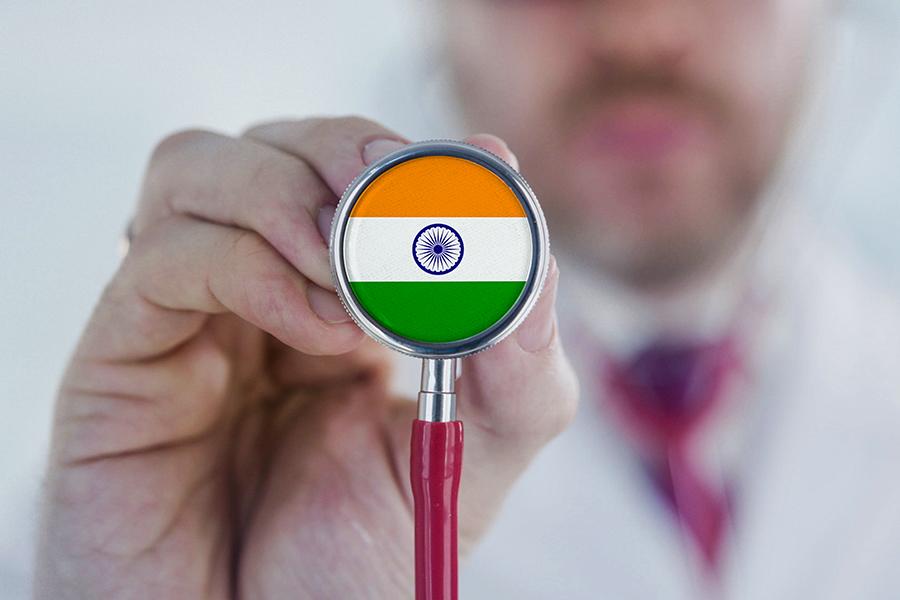The cure India's medical devices ecosystem needs
Effective public-private sector collaboration in times of crisis will show the way for a self-reliant medical devices sector
Coronavirus has been a stress-test for every country's health infrastructure. In India, under-investment and pre-existing gaps in demand and supply of high-quality medical infrastructure, and shortage of skilled health workers, has only further exposed the country’s vulnerabilities in managing its mounting health burden.
In the past months, even as India struggled to accommodate and treat critical coronavirus cases, elective procedures in general surgery and specialties including orthopaedics and bariatric were down by over 90 percent. There is emerging evidence that critical care for oncology, cardiovascular and other urgent conditions is being underutilised by over 60 percent, creating unprecedented collateral damage to overall health systems and long-term implications for patients. This lack of access to healthcare when needed has led to a trust deficit among patients and the healthcare system.
India’s well-intended but rapidly changing regulatory guidelines and fiscal policies create uncertainty and further impede the strengthening of our healthcare sector, ultimately impacting our economic growth. It is a good time to reflect on the paradigm shift needed in our health system. To work towards this shared purpose with cohesive planning and collaboration between the government, private sector and multinational companies that are equally invested in India.
Prioritising healthcare
Despite doubling its total per capita spends on healthcare from FY15 to FY20, India needs to rapidly increase total healthcare spending (private and public) from its current four percent to over eight percent of GDP to reform its healthcare sector and keep pace with other OECD nations. In the immediate term, there is a need to create a fiscal stimulus package for the healthcare sector including the release of unpaid dues to hospitals and health workers, provide subsidised loans and tax holidays, and help private hospitals and diagnostic centres tide over this period of uncertainty—hospitals have to survive to serve. Demonstration of commitment to the healthcare sector will boost investor confidence, accelerate FDIs and position the medical device market to more than double its value from $7 billion over the next five years.
Upskilling healthcare workers for standardisation of patient outcomes
Industry and government partnerships through Corporate Social Responsibility (CSR) will need to focus on building healthcare skills and developing national standards for healthcare professionals.
Introducing prudent regulatory and pricing reforms
In the short-term, removal of health cess may bring costs down by 25-30 percent and mitigate operational difficulty in the current environment. In the long run, cess could be considered across all the sectors of the economy to generate resources for health infrastructure. To keep treatment costs in check, import duties can be exempted and GST rates on inputs/parts of equipment can be rationalised. Trade Margin Rationalisation for all medical devices should be implemented at the earliest to ensure a responsible pricing approach for innovation. The Department of Pharmaceuticals notification for production linked incentive (PLI) of 5 percent on incremental sales of goods manufactured in India for five years is a welcome move to incentivise domestic manufacturers.
Under the Medical Device Rules 2017, voluntary registration is required for all medical devices starting April 1, 2020. Considering the operational difficulties related to COVID-19 and dependency on multiple domestic and foreign bodies for sourcing documentation, the Government should consider extending the current voluntary registration period and subsequent dates by 6-12 months. For Public Procurement Order (PPO), any increase in local content percentage for medical devices should only be done based upon feasibility, and in consultation with the industry, in a phased manner over a period of at least five years, instead of one to three years as envisioned in the PPO. Considering that the regulation of quality management systems (QMS) is in the early stages of development, class C and class D devices should be exempted from the scope of PPO.
Ecosystem partnerships to accelerate quality and reach of innovation
The government should act as a facilitator to drive focus on key healthcare priorities, engage and empower the right stakeholders. In a recent example to solve a critical shortage of Covid-19 testing swabs, the collective efforts of the Department of Pharmaceuticals, Ministry of Textiles, Ministry of Health and Family Welfare, ICMR, National Institute of Virology, CDSCO, Centre for Materials for Electronics Technology, Reliance Industries, MSME Adi Enterprises, and Johnson & Johnson, resulted in indigenous production of millions of high-quality testing swabs at one-tenth the cost of imported ones, and in record time of one week vs. 24 weeks.
India is poised to become the global lab for innovation, leadership and growth. A clear strategy, collaborative approach by medical devices manufacturers, hospitals, scientific bodies, investors and key partners—facilitated by the government, will set India on a self-reliant path to becoming an export powerhouse of high-quality value-based products and services to the world.
The author is Managing Director of Johnson & Johnson Medical India
The thoughts and opinions shared here are of the author.
Check out our end of season subscription discounts with a Moneycontrol pro subscription absolutely free. Use code EOSO2021. Click here for details.
